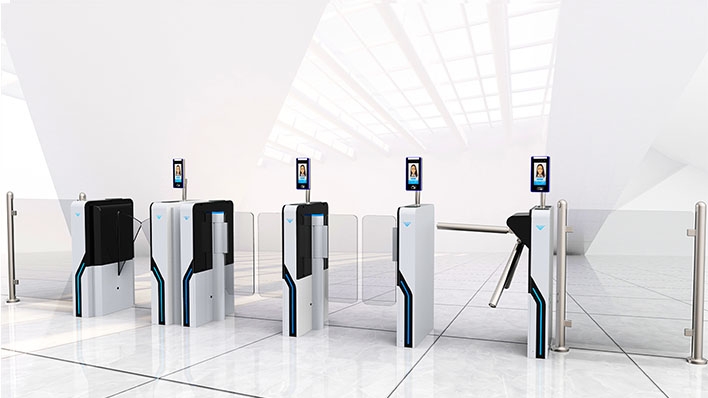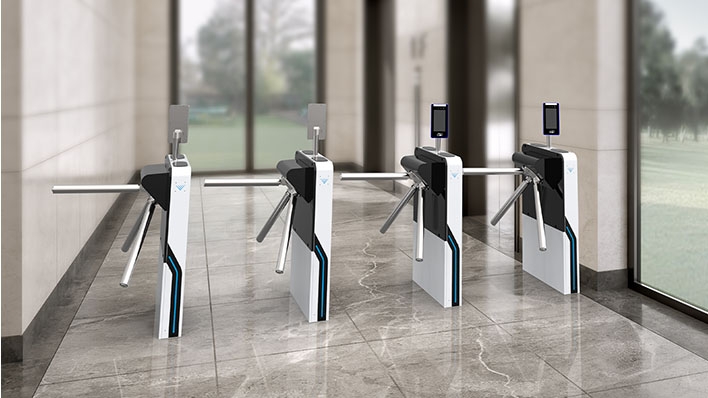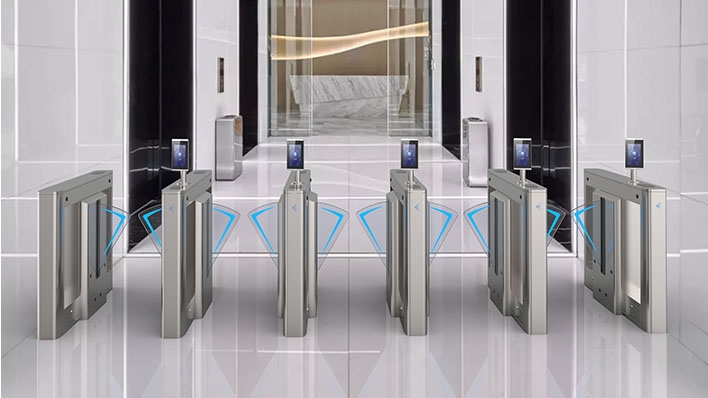What Is a Turnstile? Understanding Its Role in Modern Access Control

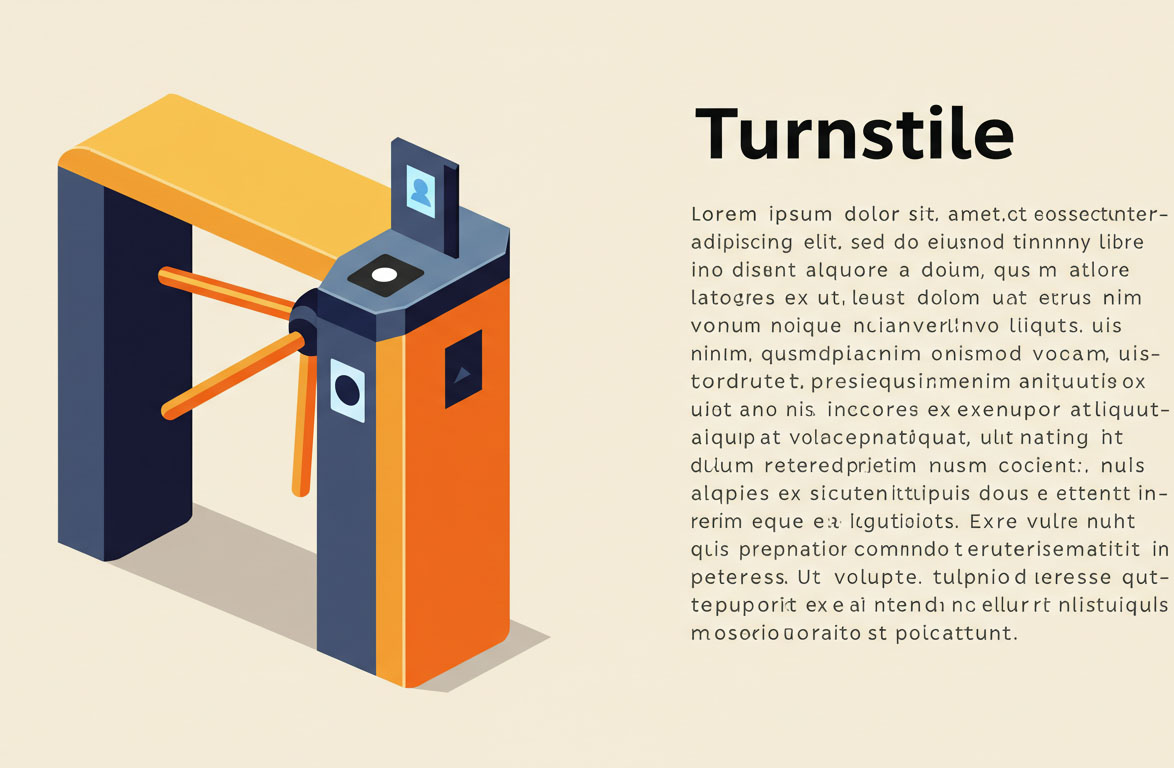
In today’s world, where security, efficiency, and crowd management are top priorities, turnstiles have become an essential component of pedestrian access control systems. You’ve probably walked through one at a train station, stadium, or corporate office—sometimes without even realizing it.
But what exactly is a turnstile? How does it work? And why is it such a vital part of modern infrastructure? This article provides a comprehensive look at what a turnstile is, the different types available, and the key benefits it offers in various applications.
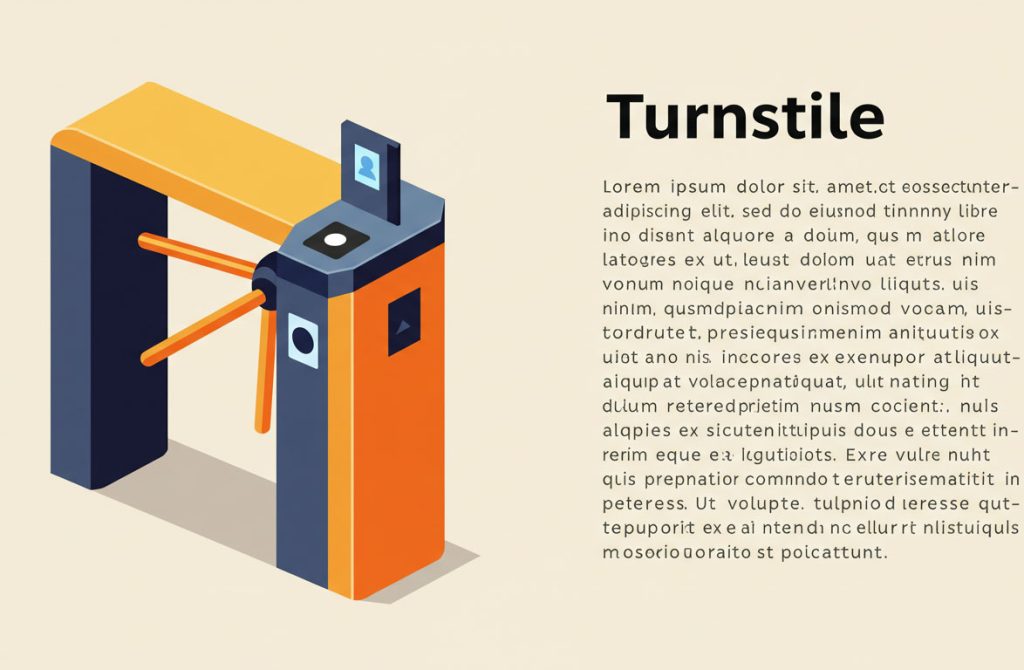
What Is a Turnstile?
A turnstile is a mechanical or electronic gate used to control access to a secure area by allowing only one person to pass through at a time. Often referred to as pedestrian access control gates, turnstiles help manage and monitor the flow of people entering or exiting a space.
Turnstiles function both as a physical barrier and a checkpoint. They are commonly used in settings where controlled entry is needed—whether for security reasons, ticket validation, or crowd flow management.
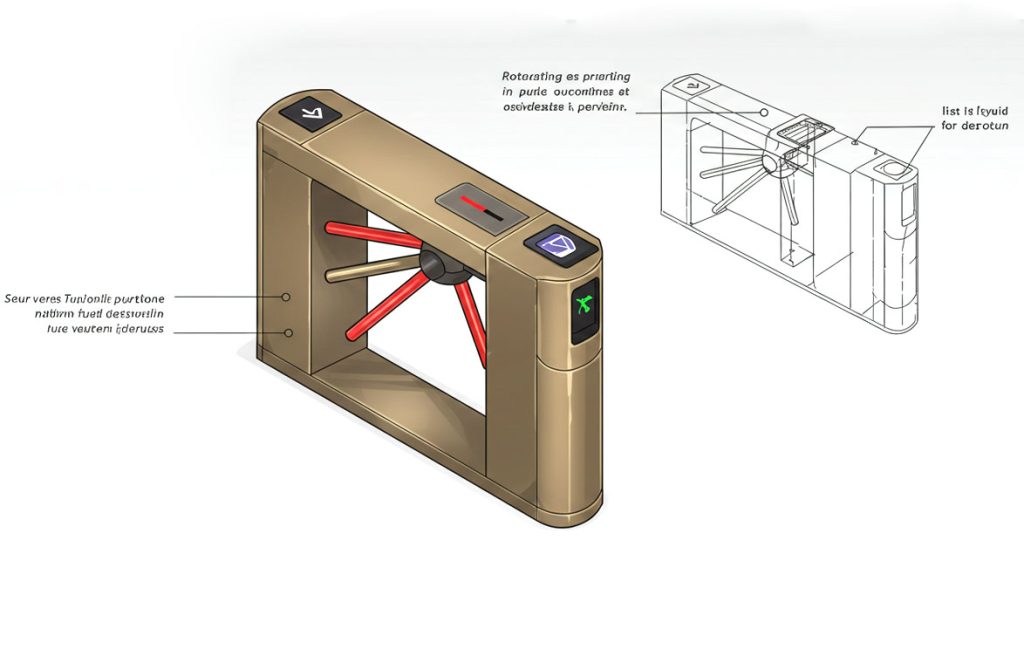
How Do Turnstiles Work?
Turnstiles operate by requiring some form of validation to allow passage. This validation might come in the form of:
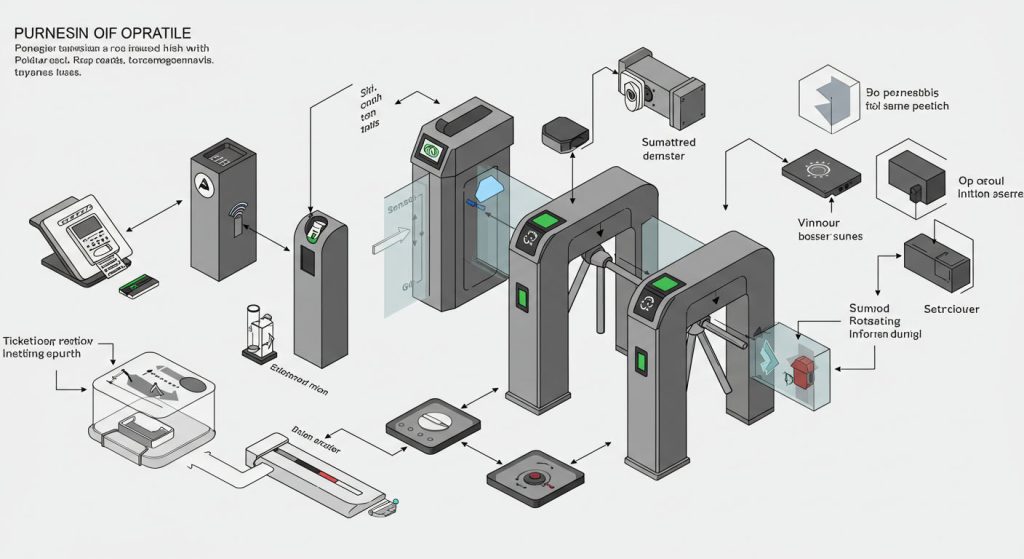
- RFID cards
- Biometric scanners (fingerprint, facial recognition)
- Barcodes or QR codes
- Tickets or tokens
Once valid credentials are presented, the mechanism unlocks, allowing the individual to pass through. After passage, the gate resets, ready for the next person. Some turnstiles work mechanically, requiring the user to push through, while others open automatically using sensors and motors.
Types of Turnstiles
Turnstiles come in several designs, each suited for different environments and levels of security. Here are the most common types:
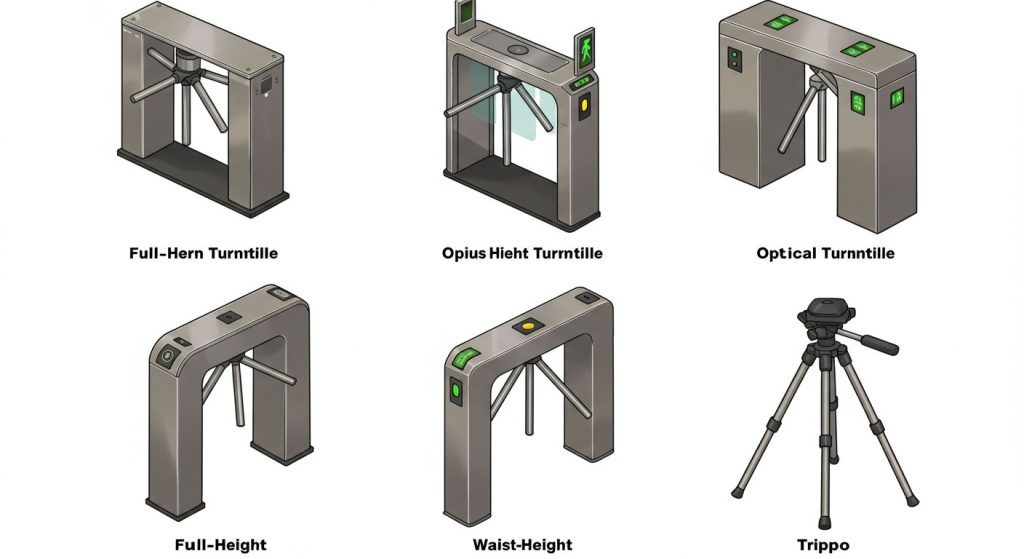
1. Tripod Turnstile
This is the most familiar type, with three rotating arms that allow entry one person at a time. Tripod turnstiles are cost-effective and ideal for moderate-security locations like gyms, office buildings, and public transit.
2. Optical Turnstile
Also known as barrier-free turnstiles, these use infrared sensors to detect and authorize passage. There are no physical arms, making them ideal for aesthetically sensitive or accessible areas.
3. Swing Turnstile (Optical Swing Gate)
These gates have swing arms that open sideways after authorization. They offer a modern appearance and are suitable for high-end office buildings, airports, and corporate lobbies.
4. Speed Gate
Speed gates operate using sliding or swinging glass barriers and offer fast throughput with high security. They are often seen in corporate headquarters and financial institutions.
5. Full-Height Turnstile
These are tall, cage-like turnstiles that offer maximum security. Commonly used at stadiums, factories, and military facilities, full-height turnstiles prevent climbing or forced entry.
6. Drop Arm Turnstile
These have horizontal arms that drop down into the housing to allow passage and reset once the user passes through. They’re used in high-security, low-traffic areas.
Key Features of Turnstiles
Modern turnstiles are more than just mechanical gates—they are intelligent systems that integrate with wider security and management platforms. Here are some common features:
- Access control integration (ID cards, biometrics, QR scanners)
- Tailgating and intrusion detection
- Real-time monitoring and reporting
- Anti-pinch and emergency breakaway design
- Customizable appearance and finishes
Applications of Turnstiles
Turnstiles are used in a variety of sectors where secure and efficient access control is necessary. Here are some of the most common applications:
1. Transportation Hubs
Subway stations, airports, and bus terminals use turnstiles to manage fare collection and crowd movement efficiently.
2. Corporate Offices
Turnstiles in office lobbies help secure premises by ensuring only authorized personnel and visitors gain access.
3. Factories and Industrial Sites
Used to regulate employee access and track time and attendance.
4. Educational Institutions
Schools and universities deploy turnstiles to ensure student safety and monitor campus entry and exit.
5. Sports and Entertainment Venues
Stadiums and concert halls use turnstiles for ticket validation and crowd control.
6. Government and Military Buildings
Full-height and high-security turnstiles are deployed for sensitive site protection.
Benefits of Using Turnstiles
Turnstiles offer numerous benefits that make them a smart choice for access control. Here are some of the most important advantages:
1. Enhanced Security
Turnstiles ensure that only authorized individuals enter secure areas, preventing unauthorized access and potential threats.
2. Efficient Traffic Flow
They help manage large volumes of people in a controlled, orderly manner, reducing bottlenecks and wait times.
3. Access Data Collection
Integrated systems can record entry and exit times, which is useful for time tracking, visitor management, and audit trails.
4. Cost Savings
By automating access control, businesses can reduce reliance on security staff and improve operational efficiency.
5. Integration Flexibility
Modern turnstiles integrate seamlessly with building management systems, CCTV, alarms, and other security infrastructure.
What to Consider When Choosing a Turnstile
Selecting the right turnstile depends on several factors:
- Security level required: High-risk areas may need full-height or speed gates.
- Traffic volume: High-traffic zones require fast throughput turnstiles like optical or speed gates.
- Space availability: Smaller spaces benefit from compact tripod or swing turnstiles.
- Accessibility needs: Wider lanes or swing gates accommodate wheelchair users and carts.
- Aesthetic design: Opt for turnstiles that complement the building’s architecture.
- Integration capability: Ensure compatibility with your current or planned access control systems.
Why Choose Turboo Technology?
Turboo Technology, founded in 2006, is a leading manufacturer of intelligent pedestrian access control systems. We offer a wide variety of turnstiles—from tripod and swing gates to high-speed and full-height solutions—trusted by thousands of clients across the globe.
With nearly 100,000 square meters of production space and a professional R&D team, Turboo delivers high-quality, customizable, and reliable turnstile solutions for all industries. Whether you need standard models or fully customized systems, Turboo is your go-to partner for secure, smart access control.
Conclusion
A turnstile is much more than a simple gate—it’s a powerful tool for enhancing security, improving operational efficiency, and managing pedestrian traffic. As businesses and public facilities increasingly adopt smart infrastructure, turnstiles play a central role in shaping secure, accessible, and technology-driven environments.
Whether you’re outfitting a new office, upgrading transit infrastructure, or securing a sensitive facility, choosing the right turnstile system is critical. With its versatility, durability, and integration potential, a well-designed turnstile solution is an investment in both safety and success.
For more information about turnstiles or to explore Turboo’s full range of solutions,










